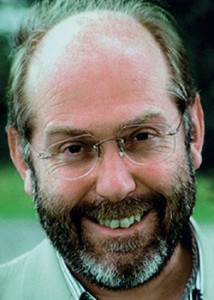Alistair Moffat was born and bred in the Scottish Borders. A former Director of the Edinburgh Festival Fringe and Director of Programmes at Scottish Television, he now runs the Borders Book Festival. He is the author of a number of highly acclaimed books and is a former Rector of St. Andrews University.
In this new single volume history, Moffat presents the story of Scotland from the Ice Age to the recent Referendum. As well as focusing on key moments in the nation’s history such as the Battle of Bannockburn and the Jacobite Risings, the author also features less well documented episodes. From prehistoric timber halls to inventions and literature, Moffat’s tale explores the drama of battle, change, development and loss interspersed with the lives of the ordinary Scottish men and women who have come to define the nation.
Complement this book with repeat visits to The National Museum of Scotland. (http://www.nms.ac.uk/national-museum-of-scotland/) Its ambition is similarly to present the story of Scotland from earliest times to the present day. Cleverly, the earliest geological period is presented in the basement. We learn, for example, that the land mass of Scotland has travelled across the globe and was once at the Equator. The visitor then works up through the levels to the most recent social and cultural history of the country. The Beginnings gallery (Basement) covers the first three billion years of geological development, then presents the origins and evolution of our landscape, flora and fauna. The Early People gallery (Level 1) shows how people lived from around 8000 BC to 1100 AD. It displays how they used the land’s resources, interacted with each other and made sense of the world. Archaeological treasures, including the Pictish Hilton of Cadboll stone, Iron Age carynx and gold torcs and Roman Cramond lioness are presented. The Kingdom of the Scots (Level 2) follows Scotland from its emergence as a nation around 1100 to 1707, when the Union of the Parliaments created the United Kingdom. This gallery showcases the tiny Monymusk reliquary, the Queen Mary harp and the Lewis chessmen. William Wallace, Robert the Bruce and Mary, Queen of Scots feature here, whilst the changing face of Scotland is traced through developments in trade, economy, and fierce religious and political controversy. Scotland Transformed (Level 3) presents the 18th and early 19th century, during which Scotland began to change from a predominantly rural, medieval society to an urban, modern one. The romantic trappings of the doomed Jacobite rebellions, including a silver picnic set made for Bonnie Prince Charlie, make way for the power of industry, with the gallery dominated by the mighty Newcomen atmospheric engine. Industry and Empire (Levels 4 and 5), shows how life in 19th century Scotland was moulded by industrial development. The mysterious superstitions surrounding the Arthur’s Seat coffins are contrasted with the pioneering progress of Scottish engineering, represented by the mighty steam locomotive Ellesmere. The story of Scots emigration is also described. Scotland: A Changing Nation (Level 6) traces the varied experiences of people living and working in 20th century Scotland through five major themes: war, industry, daily life, emigration and politics. From hard-won medals to a Hillman Imp car, suffragette brooches to the tent used during the Democracy for Scotland campaign, personal stories, iconic objects and film footage tell the tale of Scotland’s social history, showing how the country has been shaped into a modern and diverse nation in the 21st century. The exhibits relating to the recent past easily excite the most interest, as if the lives of those viewing them were any more important than those of past centuries. A film One Nation: Five Million Voices finally explores what it means to be Scottish at the present time.
For Moffat’s book enquire at your local library or consult http://www.amazon.co.uk/Scotland-History-Earliest-Alistair-Moffat/dp/1780272804/ref=sr_1_1?ie=UTF8&qid=1440319250&sr=8-1&keywords=scotland+moffat for full bibliographic details.
576 pages in Birlinn
First published 17 September 2015
ISBN 978-1780272801
Alistair Moffat


